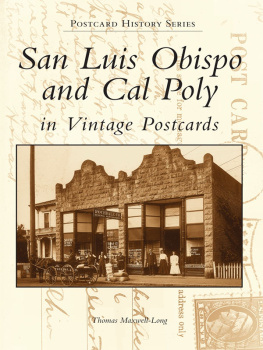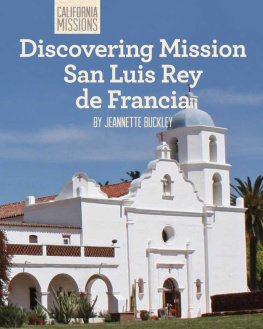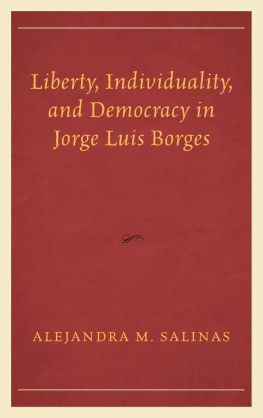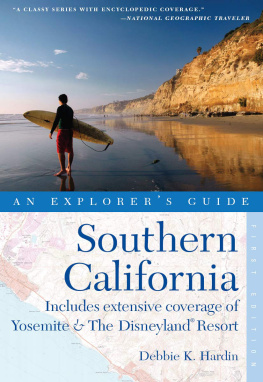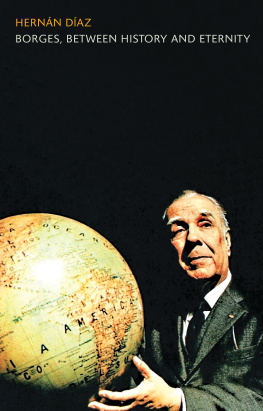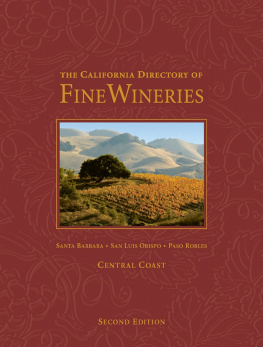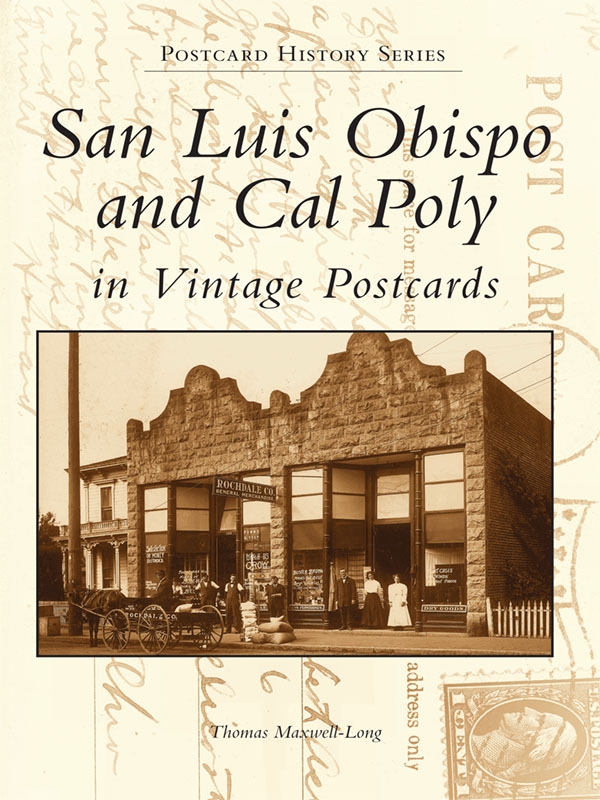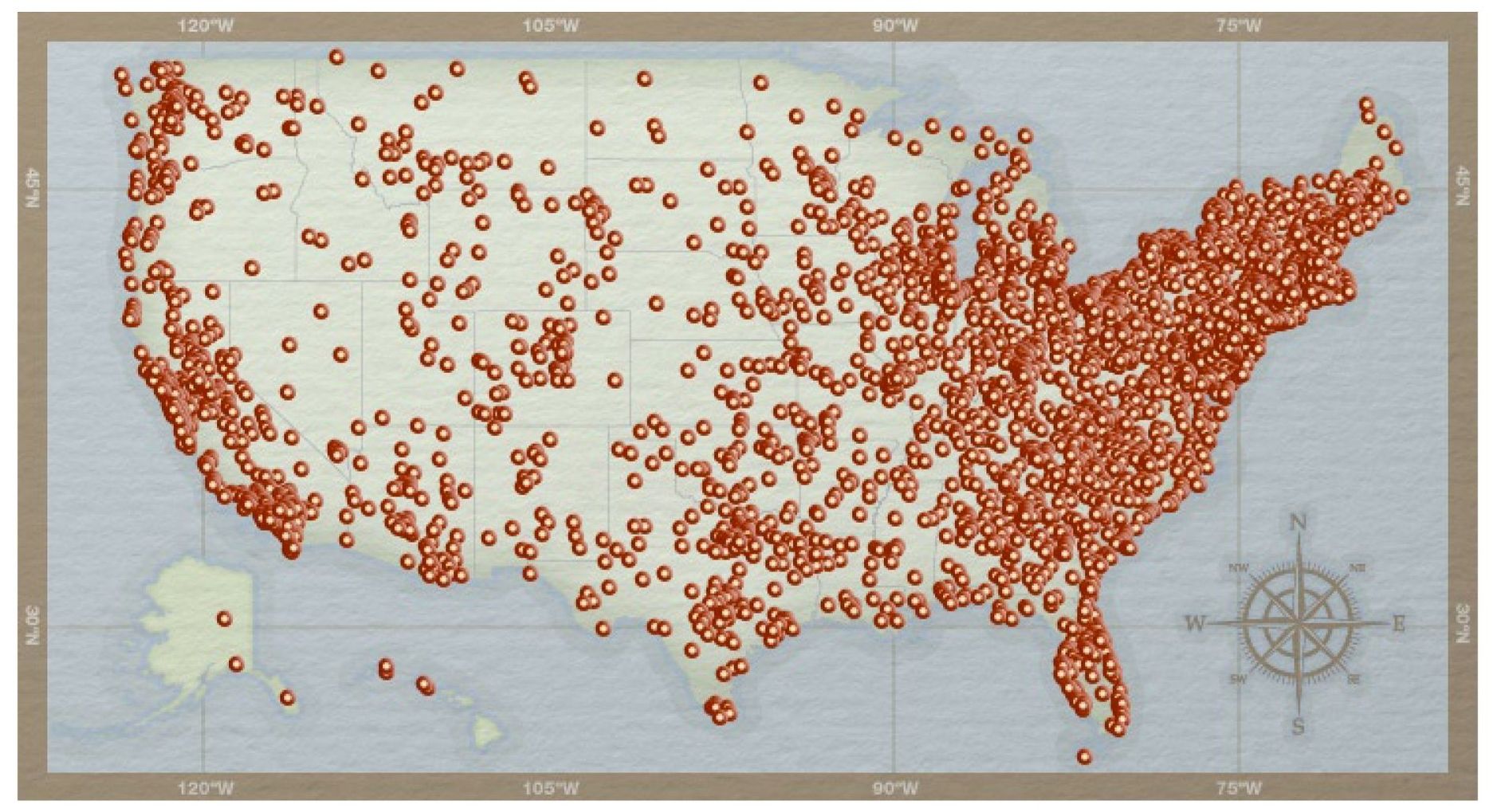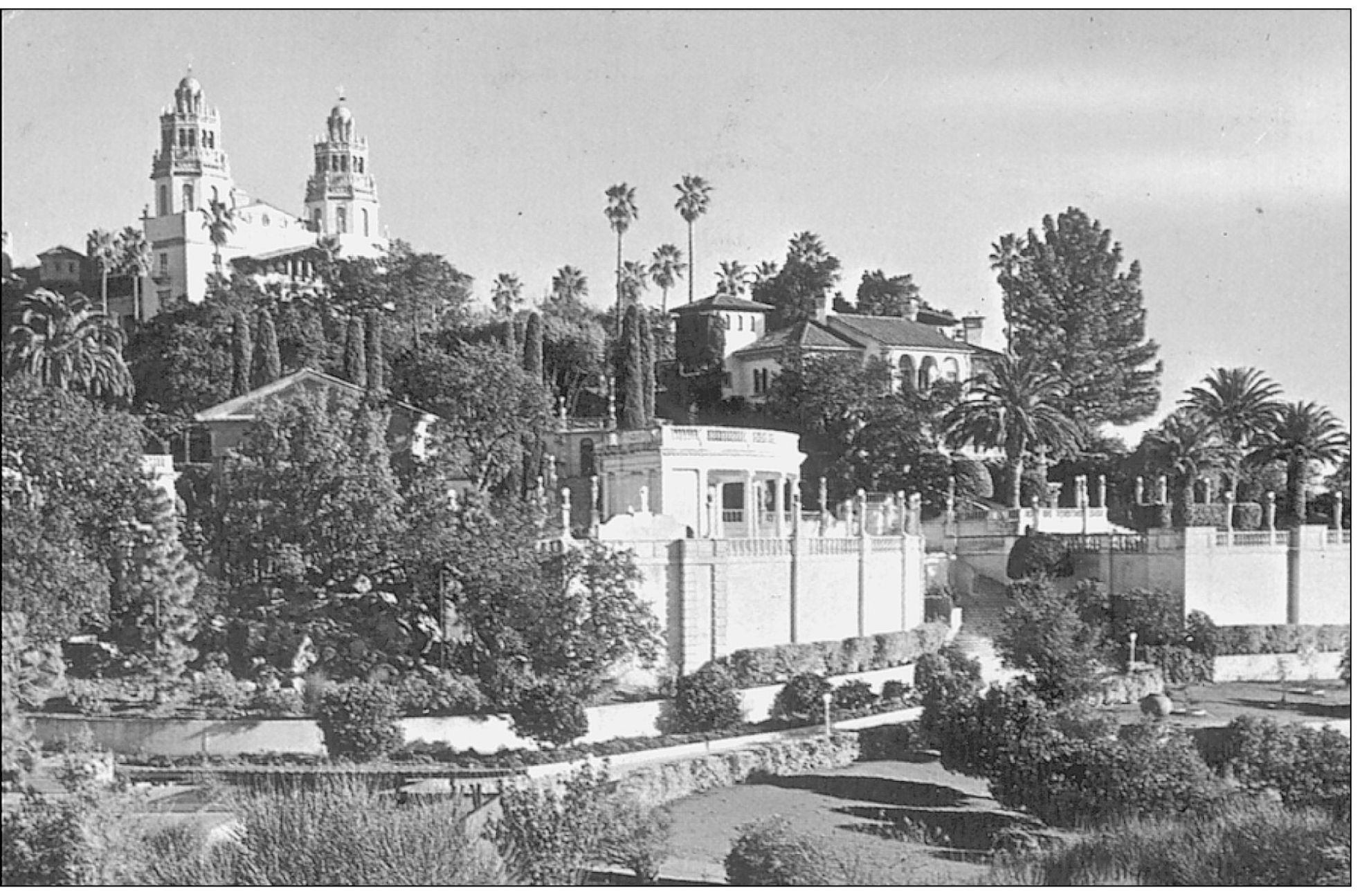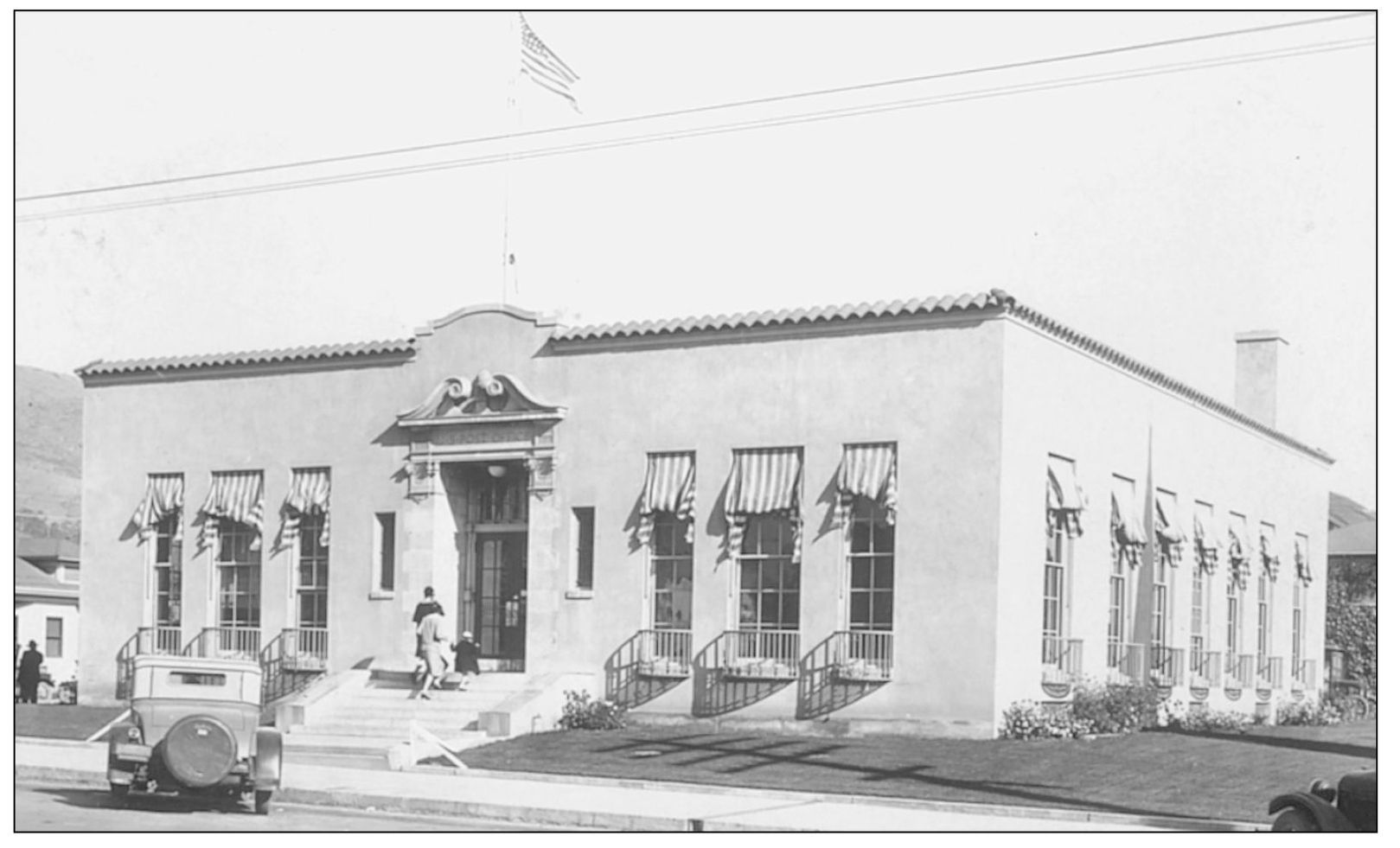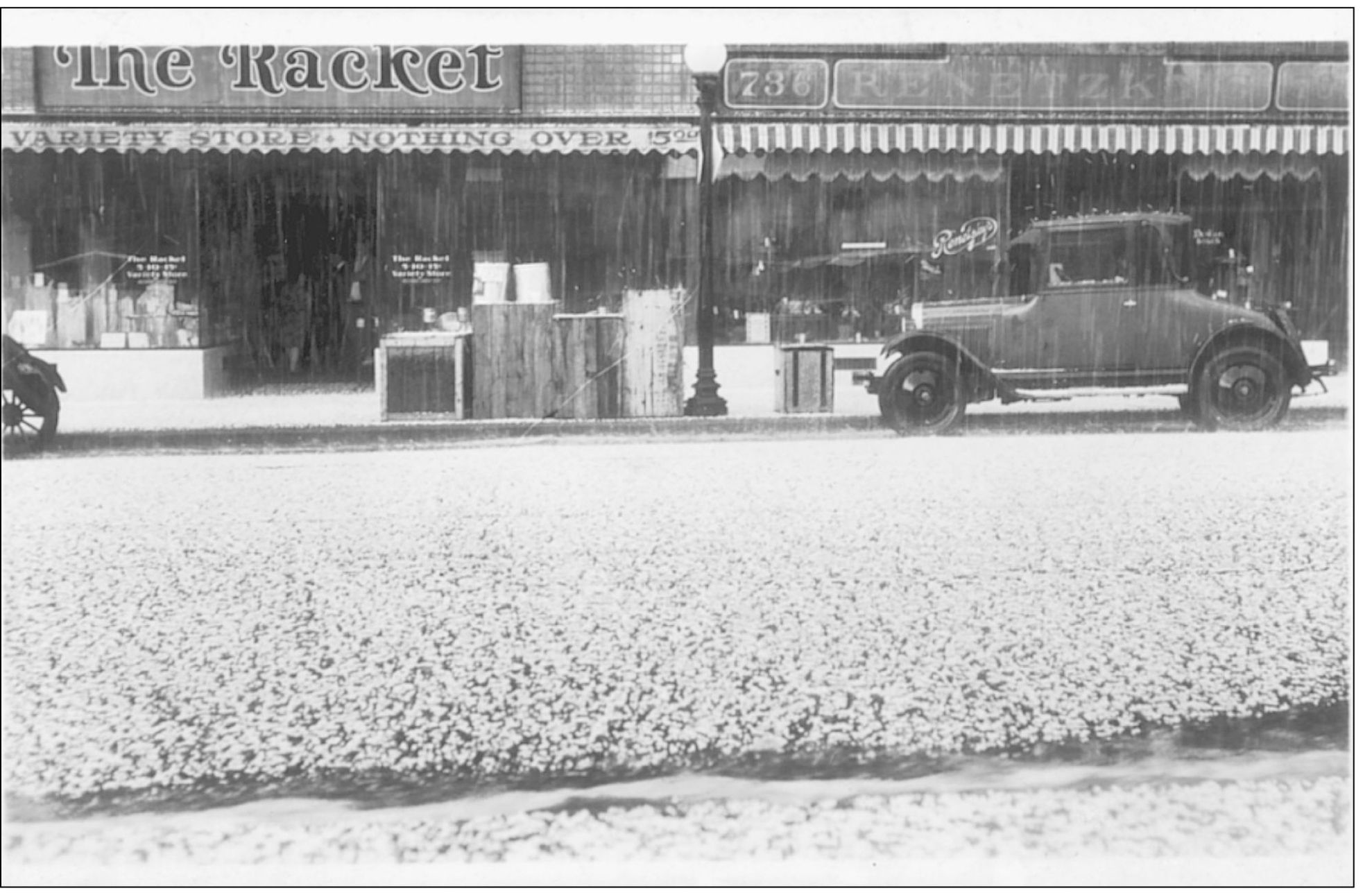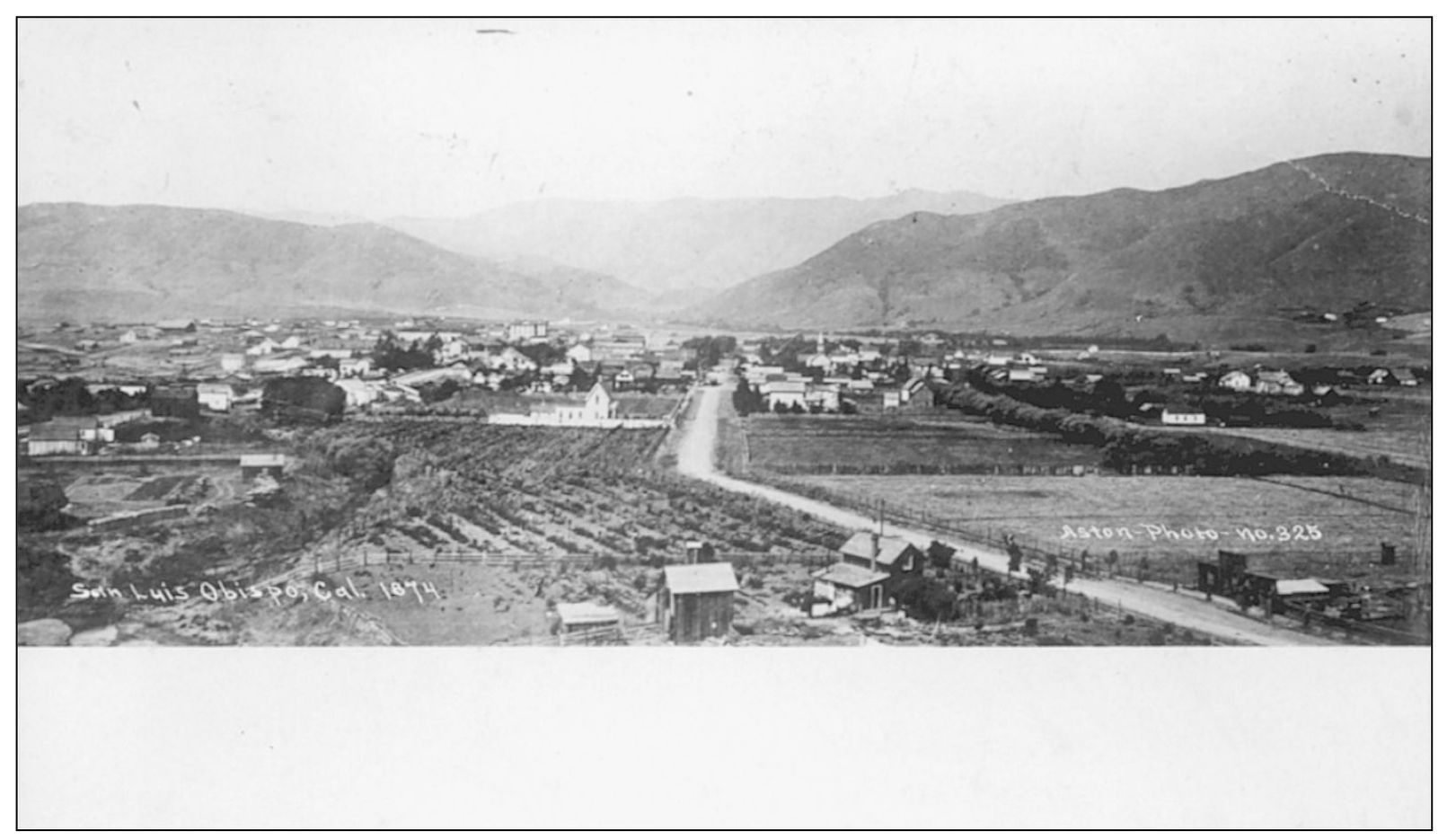I would like to offer special thanks to Lloyd Jones for his generosity in letting me use his (Aston) familys postcards. Also, great thanks to Max Bakke for allowing me to incorporate some of his collection into this book, and for the hours of historical perspectives on San Luis Obispo, which have proven to be of even greater value. Additionally, I would like to thank Gordon M. Bakken for helping me put together the time needed to assemble this book, as well as his unmatched, expert historical advice, which made the entire process much smoother for me. Lastly, I would like to express my deepest gratitude to my wife, Roberta, for having such great patience throughout this entire project.
Find more books like this at www.imagesofamerica.com
Search for your hometown history, your old stomping grounds, and even your favorite sports team.
Copyright 2001 by Thomas Maxwell-Long ISBN 978-0-7385-0811-5
Published by Arcadia Publishing
Charleston SC, Chicago IL, Porsmouth NH, San Francisco CA
Printed in the United States of America
Library of Congress Catalog Card Number: 00-111087
For all general information contact Arcadia Publishing at:
Telephone 843-853-2070
Fax 843-853-0044
E-Mail sales@arcadiapublishing.com
For customer service and orders:
Toll-Free 1-888-313-2665
Visit us on the Internet at www.arcadiapublishing.com
9781439628027
The famous Hearst Castle in San Simeon was built from 1922 to 1927 under the direction of the world famous architect Julia Morgan. William Randolph Hearst had wanted to construct a lavish and monumental estate along with his 130-room mansion, which he was quite successful in doing. The fantastic gardens became the home of more than exotic plants and flowers. Three guest houses are located within their boundaries, which today contain in their own right an extensive amount of artwork that compliments the holding in the main house. The bell towers of the mansion, which stand out above the tree line, contain two bedrooms, both filled with unbelievable luxuries. The Hearst Castle is now one of the California State Historical Monuments and can be easily accessed from Pacific Coast Highway 1. It attracts hundreds of thousands of visitors each year.
Pictured is the New Post Office built after World War I in downtown San Luis Obispo.
The magnificent Paso Robles Inn, whose history began back in 1857 with James and Daniel Blackburn. At the turn of the century a hot springs bath was added, which was claimed along with the rest of the Paso Robles Inn by a tragic fire in 1940. This postcard commemorates the rebuilt Paso Robles Inn, which was under construction for two years, and re-opened for business in 1942. As the postcard notes, the Inn is located at the half-way point between Los Angeles and San Francisco.
INTRODUCTION
San Luis Obispo is located nearly equidistant between San Francisco and Los Angeles along the California Coastline. The flora-covered mountains, rolling hills, and sweeping valleys make this land one of the most beautiful points on the West Coast. According to archaeological evidence, man began to occupy this region and tap its abundant natural resources around 1400 BCE. These first inhabitants of the Mid-California Chaparral country were the Chumash and Salinan Indians.
Nearly 3,000 years went by before these California Indians would encounter European explorers in search of adventure and riches in the New World. Only 50 years after Christopher Columbus departed Spain in search of a new route for trade with India, another explorer of the Spanish monarchy encountered what is today San Luis Obispo.
In the winter of 1542, Captain Juan Rodriguez Cabrillo navigated two ships into Morro Bay. This Portuguese sailor and his crew, under the flag of Spain, became the first Europeans to see the Central Coast of California. By the mid-18th century San Luis Obispo had been the object of nearly a half-dozen explorations by various white men. In 1769, serious settlement in California by the Spanish began.
The year 1769 marks the genesis of Spanish occupation of California. Under the auspices of its first governor, Gaspar de Portola, this western land began to be scouted and surveyed, in search of riches and natural resources that could add to the wealth of the Spanish Crown. In 1772, Father Junipero Serra established the Mission San Luis Obispo de TolosaCalifornias fifth missionalong a stream, and so began the official settlement of the land as San Luis Obispo.
In 1822 Mexico achieved full independence from Spain, and California became part of that new nation. The victory of the United States in the Mexican-American War in 1848 brought California along with other great stretches of western land under the champions flag. November 13th of the following year, the California Republic adopted a constitution and on September 9, 1850, California was admitted to the Union as a state, with San Luis Obispo as one of the original 27 counties.
These fantastic postcards cover the transition that San Luis Obispo made from being a 19th-century community to a city at the dawn of the 20th century. In no small part of this growth process was the emergence of the Progressive Eras scientifically designed California Polytechnic School, which today is the California Polytechnic State University, or simply Cal Poly. This was the foundation period of contemporary San Luis Obispo. The arrival of the railroad, the development of the Union Oil of Californias (Unocal) oil fields, and the tremendous agricultural and dairy industries all fed the development of San Luis Obispo. The first ten years of the 20th century cemented the wealth of SLO, as it became a center of trade in central California.
This postcard captures the great hailstorm of San Luis Obispo on June 6, 1922. Insurance photographer Frank Aston captured this moment in history, believing that many people would be filing claims for broken windows, damaged automobiles or who knows what. His instincts were proven correct: he had over 20 requests to photograph damaged property from this storm.
Part I
SAN LUIS OBISPO
Not far from being a one-road town in 1874, the agricultural heritage of San Luis Obispo is apparent in this postcard as the majority of the land in the central basin is dedicated to farming. The Spanish Mission settlement has not grown much since its founding one hundred years prior.

